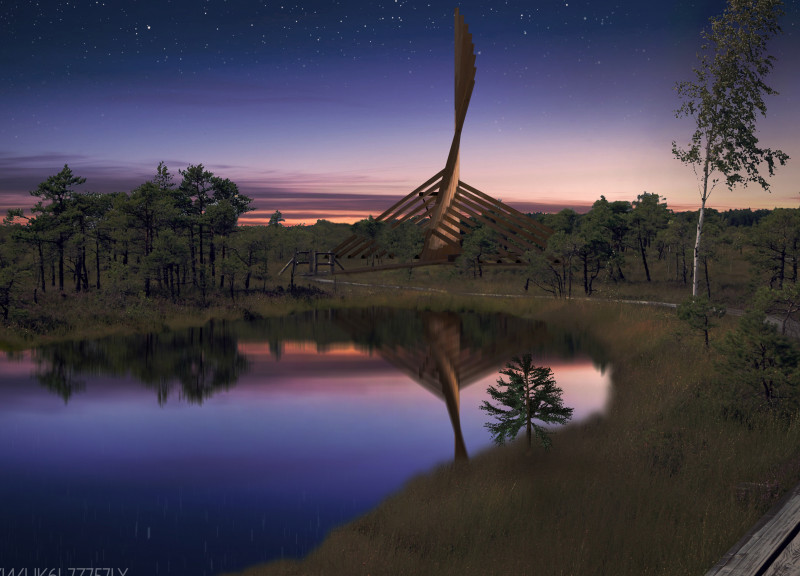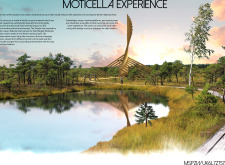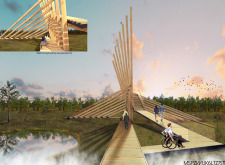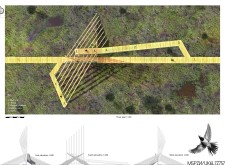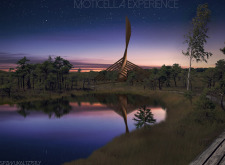5 key facts about this project
The Moticella Experience is located in Kemeri National Park, a diverse ecological area that is home to various species, including the Pied Wagtail, a bird that symbolizes the region. The project aims to enhance the experience of visitors while connecting them to the unique landscape. The observation tower features a design inspired by the bird, mimicking its form with a fluid structure that changes depending on the viewer's perspective. This relationship between nature and architecture lies at the heart of the project’s concept.
Accessibility Features
The design places significant importance on making the location accessible for all visitors. Footbridges, ramps, viewing platforms, and seating areas have been thoughtfully integrated to accommodate people with mobility challenges. This attention to inclusivity ensures that everyone can enjoy the park and its sights. It reflects a modern understanding of how public spaces should work for a diverse range of visitors.
Environmental Considerations
Attention to the environment plays a vital role in the design. The structure seeks to minimize its footprint by lightly touching the ground, reducing any disruption to the surrounding habitat. Locally sourced materials help the tower blend into its natural surroundings while promoting sustainability. This approach allows the project to exist in harmony with the flora and fauna of the park.
Lighting and Ambience
Solar lighting features are included to add functionality after dark. This aspect of the design enhances the experience for evening visitors. The lights create a welcoming atmosphere while guiding those who explore the park at night. They emphasize the tower’s form and offer a balance between visibility and maintaining the area’s natural beauty.
As the sun sets, the tower casts long, shifting shadows that interact with the landscape, underscoring its connection to the environment and inviting exploration from all who pass.


